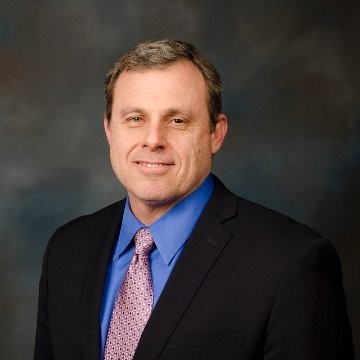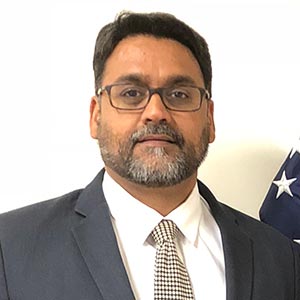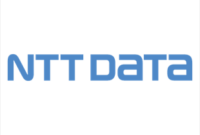Hubbard Radio Washington DC, LLC. All rights reserved. This website is not intended for users located within the European Economic Area.
On Air: Federal News Network

Moving workloads to the cloud? Time to optimize
October 27, 2022
During this exclusive webinar, moderator Tom Temin will discuss the advancement of cloud adoption and optimization with agency and industry leaders.
Now that commercial cloud computing has become an expected part of the federal IT enterprise, agencies are moving fast into the era of cloud optimization.
Workloads have steadily moved to the cloud, initially under a federal cloud-first policy and now under a cloud-smart policy. These migrations have two basic goals: The first is improved mission delivery. Second, on the IT side, cloud helps agencies escape a capital expenditure model in favor of an operating expense model.
But even an OpEx model can be expensive. That’s why cloud efforts now trend towards improving cloud migration through optimization, a process that involves balancing data flow costs and application performance. Optimization requires the IT staff to consider each workload separately, as opposed to a mass lift-and-shift to a provider’s cloud. It also requires cleaning up business processes, trimming rosters of applications and deduplicating data before moving anything to the cloud.
Those are among the measures recommended by expert panelists on the Federal News Network webinar Next Level Cloud for Government. Our panelists include:
- Vid Desai, chief information officer in the Office of Digital Transformation at the Food and Drug Administration
- Greggory Judge, deputy director of the Army Enterprise Cloud Management Agency
- Sukhvinder Singh, chief technology officer at the U.S. Agency for International Development
- Nat Bongiovanni, chief technology officer at NTT Data Federal Services
What to factor in to optimization
“I put optimization in two big categories. One is from the cost point of view, and the other is from the performance point of view,” Singh said. Sometimes the two factors come together. For example, in USAID overseas operations in austere areas, use of local edge computing can reduce latency and minimize data egress costs from distant clouds, Singh said.
In many ways, optimization for cloud computing starts before a single application moves to the cloud.
At FDA, legacy applications were “developed in a very siloed, fragmented manner,” Desai said. Now, as part of optimization, he’s looking to redo business processes and deduplicate logic code before moving a workload to the cloud.
“If we just rush and do a lift-and-shift, we’re just going to move the problems we had on prem to the cloud,” Desai said.
The Army’s Judge underscored that notion, noting the overarching goal of the service’s cloud computing is to enable data-informed decision-making at all echelons, both on the business and tactical side.
“Our enterprise cloud journey really is as much of an application rationalization and a business process reengineering effort as it is a pure cloud migration journey,” Judge said.
Learn by doing with cloud optimization
NTT Data’s Bongiovanni said that it’s entirely possible to modernize mainframe applications in legacy code for transitioning to the cloud. But the soundest strategy is to start with newer or cloud-native applications, then apply the learnings to more challenging migrations, he advised.
“The benefits feed into the pattern of doing that rationalization,” Bongiovanni said. “It isn’t a single step. And there’s lots that needs to be learned during the process. But the ultimate destination is a more effective and a more efficient organization.”
Rationalizing applications, pursuant to an optimized cloud strategy, goes hand in hand with an optimized data strategy.
“We look at all of our application architecture analyses from the lens of the data,” the Army’s Judge said. “What data is actually required? Where’s that data coming from? What’s the provenance of that data? And is that data being duplicated in multiple systems?”
Judge said his group follows up this analysis by mapping the data flows among systems.
“Then we can begin to make, I would say, business decisions on which applications really are going to be the future and which applications can be can be deprecated,” Judge said.
All aboard for the optimization journey
Both he and Desai noted the importance of getting buy-in from affected program owners when retiring or overhauling applications. Otherwise, “it’s almost like pushing a boulder uphill,” Judge said.
It’s easiest to get buy-in by highlighting process improvements and how optimization will benefit the mission, rather than on IT. That’s because duplicative applications indicate duplicative processes, Desai said.
“We go back to the to the business side to start the process rationalization,” he said. “Once you get agreement there, we find that the technology rationalization decisions become a lot easier.”
With a more rational set of applications and data, the optimization task becomes one of minimizing data flows in and out of clouds. As Bongiovanni pointed out, “Cloud vendors make it extremely easy to move data and information into the cloud. And then they charge you money to pull it out.”
A strategy NTT Data recommends is to keep as much processing and data flow within the cloud. Bongiovanni’s analogy: “Send grapes into the cloud, turn it into wine, turn that wine into brandy and then just download the brandy. … That’s it, the rest of it stays on the cloud. Because the cost of moving data down can become excessive, and it’s usually something that gets overlooked in the planning process.”
Optimizing through SaaS adoption
Panelists pointed out other useful steps when optimizing for the cloud. Among them, where computing at the edge is important, keep the data there to the extent possible. If an edge application requires data that’s been consolidated in the cloud, only move the minimum data required to the edge.
Judge said the Army uses tools to collect data and application dependencies, “so that we can minimize what I would say inter-cloud or cloud and data center flows.”
Panelists said software as a service products offer a way around legacy applications and much of the cloud optimization calculus. In fact, nearly every agency already uses SaaS in the form of email. Desai said he expects government to eventually adopt business functions, such as human resources management, as commercial cloud services.
Judge said the Army is looking to use more commercial SaaS products and adapt its business practices to the applications. “We’re getting away from our build-your-own processes to manage the business of the Army,” he said.
At USAID, the agency is exploring artificial intelligence algorithm training as a cloud service, after having adopted a commercial IT service management cloud offering, Singh said.
Bongiovanni cautioned agencies to compare licensing costs and to ensure that all of the functionality available in locally hosted applications carries over to SaaS.
Learning objectives:
- Agency Cloud Strategies
- App Rationalization within Agencies
- Hybrid Cloud Environments
Complimentary registration
Please register using the form on this page or call (202) 895-5023.
By providing your contact information to us, you agree: (i) to receive promotional and/or news alerts via email from Federal News Network and our third party partners, (ii) that we may share your information with our third party partners who provide products and services that may be of interest to you and (iii) that you are not located within the European Economic Area.
Please register using the form on this page.
Have questions or need help? Visit our Q&A page for answers to common questions or to reach a member of our team.
Speakers

Greggory Judge
Deputy Director
Army Enterprise Cloud Management Agency

Sukhvinder Singh
Chief Technology Officer
U.S. Agency for International Development

Vid Desai
Chief Information Officer
Office of Digital Transformation, Food and Drug Administration

Nat Bongiovanni
Chief Technology Officer
NTT DATA Federal Services

Tom Temin
Host, The Federal Drive
Federal News Network
By providing your contact information to us, you agree: (i) to receive promotional and/or news alerts via email from Federal News Network and our third party partners, (ii) that we may share your information with our third party partners who provide products and services that may be of interest to you and (iii) that you are not located within the European Economic Area.

